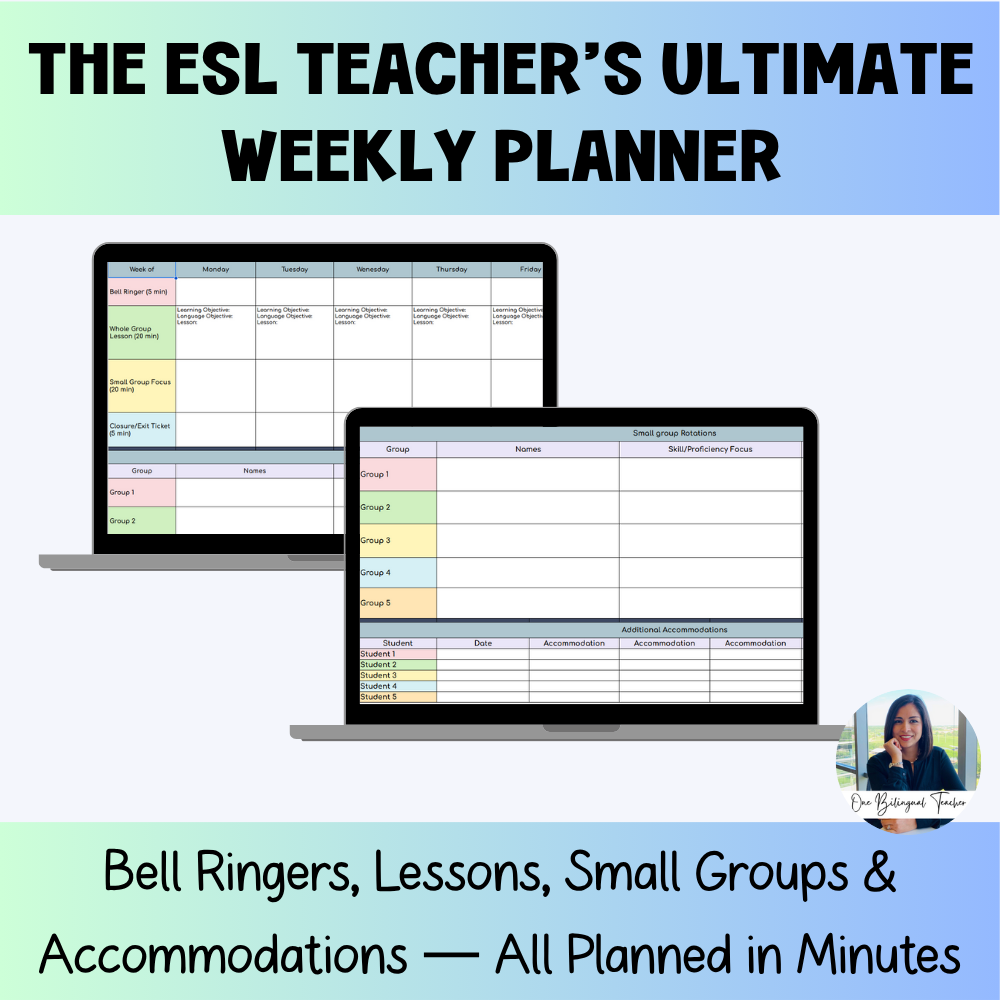How to Plan an ESL Lesson When You Have No Curriculum (and No Time)
It’s 6:45 AM. You’ve got 30 minutes before your first class, a stack of standards, and a room full of English learners—newcomers, long-term ELs, and everyone in between. There’s no curriculum, no pacing guide, and no time to wing it.
Sound familiar?
If you're teaching ESL without a curriculum (or with one that’s more like a suggestion than a plan), you're not alone. So many ESL teachers are expected to support multiple levels, across multiple grades, with little to no direction—and somehow make it engaging, aligned, and differentiated.
Here’s the good news: You don’t need a full-blown textbook or a 6-week unit plan to teach your students well.
In this post, I’ll walk you through a plug-and-play ESL lesson plan you can use when time is short and resources are limited—plus where to find done-for-you lessons that save you hours every week.
Why So Many ESL Teachers Are Left with Nothing
Let’s be real: most ESL teachers aren’t handed a comprehensive curriculum on day one. Instead, we’re often handed a list of standards and told to “support language development” for:
Newcomers who just arrived last week
Long-term ELs who are struggling with academic writing
Multiple grade levels, sometimes K–12
Content classes we’re supposed to co-teach with zero prep time
Add in the lack of resources and planning time, and it’s no wonder so many of us feel overwhelmed.
What You Don’t Need to Plan a Good Lesson
Let’s take some pressure off. You do not need:
❌ A full unit before school starts
❌ A 45-slide PowerPoint
❌ An ELA curriculum adapted for ELs
❌ Five different versions of every lesson for every level
You just need a simple, repeatable structure that gives your students access to language—speaking, listening, reading, and writing—at their level.
The 3-Part Plug-and-Play ESL Lesson Plan
Here’s the lesson structure I recommend (and use in the membership)—it works whether you’re teaching newcomers, intermediates, or a mix of both.
1. Warm-Up / Bell Ringer (5–10 minutes)
Start with a predictable routine:
Daily vocabulary
Sentence of the day
Quick picture prompt or discussion question
This gets students focused, using English right away, and gives you a chance to informally assess where they are.
2. Input + Modeling (15–20 minutes)
Introduce content in a way that’s visual and scaffolded:
Short reading passage or video
Clear vocabulary instruction with visuals
Modeling sentence structure or grammar in context
You want students to see and hear English before they’re expected to produce it.
3. Practice / Output (15–25 minutes)
This is where students apply what they’ve learned:
Write using sentence frames
Practice speaking in pairs
Match vocabulary to images
Complete a graphic organizer
Adjust the complexity, not the format. The structure stays the same—you just plug in different content each day.
What If You Only Have 5 Minutes?
It happens. Here are a few grab-and-go ideas that take zero prep:
Show a picture. Ask: “Who do you see?” “What are they doing?”
Give students 3 words and ask them to make a sentence
Have students ask and answer one question with a partner
Review yesterday’s vocabulary or write a “one-sentence story”
Need Lessons Already Done for You?
If you’re tired of reinventing the wheel every week, I’ve got you.
Inside my ESL Teacher Membership, you’ll find ready-to-use lesson packs that include:
✔️ Warm-ups and bell ringers
✔️ Vocabulary and visuals
✔️ Scaffolded reading passages
✔️ Speaking and writing activities
✔️ Sentence frames and graphic organizers
Everything is leveled, print-and-go, and designed specifically for middle and high school English learners. No fluff. No guesswork.
Click here to join the membership and take the pressure off your planning.
Final Thoughts: Progress Over Perfection
“You don’t need 5 lessons. You need 1 that works for 5 learners.”
You don’t need a “perfect” ESL lesson. You need a structure that supports your students and gives you your evenings back. Whether you’ve got 5 minutes or 50, a little structure and the right tools can go a long way.
You are the curriculum—your flexibility, your scaffolding, your care.
Let the lessons do the heavy lifting so you can focus on teaching.
Want a free ESL Lesson Planner Template you can use every week?


